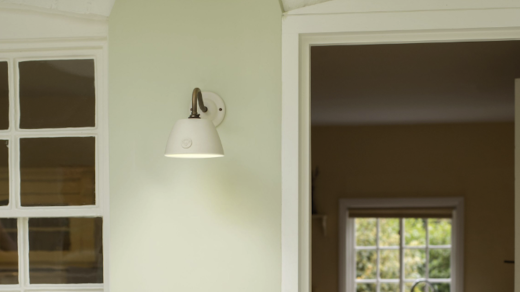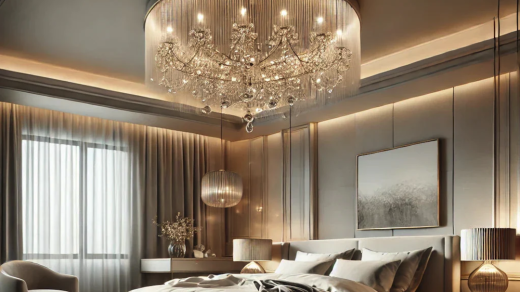When selecting a table lamp Vopdesign for your home, it’s essential to first assess your lighting requirements. Consider the lamp’s intended purpose, whether it’s for reading, working, or creating ambiance. This understanding will guide you in determining the appropriate light output.
For reading or working, a lamp with higher lumen output providing bright, focused light may be preferable. Conversely, for creating a cozy atmosphere in living spaces or bedrooms, a lamp with softer, warmer light might be more suitable. The lamp’s placement is another crucial factor to consider.
Its location, whether on a bedside table, desk, or living room side table, will influence the ideal size and height of the lamp. The specific lighting needs of the area should also be taken into account. By comprehending your lighting needs and the lamp’s purpose, you can make a more informed decision when choosing a table lamp.
This understanding helps narrow down options and ensures that the selected lamp will fulfill your lighting requirements while enhancing the overall ambiance of your home. Factors such as function, light output, placement, size, and height all play significant roles in determining the most suitable table lamp for your space.
Considering the Style and Decor of Your Home
Understanding Your Home’s Style
The first step is to identify the overall style of your home – is it modern, traditional, eclectic, or minimalist? This will help you choose a table lamp that complements the existing aesthetic of the room.
Considering the Room’s Decor
In addition to the overall style of your home, consider the specific decor of the room where the lamp will be placed. Take into account the colors, textures, and materials used in the space. For example, if you have a room with a lot of natural wood and earthy tones, you may want to choose a table lamp with a wooden base and a linen shade to complement the existing decor.
Enhancing the Room’s Focal Points
Furthermore, consider any specific design elements or focal points in the room. If you have a statement piece of furniture or artwork, you may want to choose a table lamp that complements or enhances that focal point. By doing so, you can create a cohesive and harmonious look that enhances the overall atmosphere of your space.
Creating a Harmonious Look
By considering the style and decor of your home, you can select a table lamp that not only meets your lighting needs but also enhances the overall aesthetic of your space. Remember to take into account the overall style of your home as well as the specific design elements and focal points in the room.
Choosing the Right Size and Height
The size and height of a table lamp are crucial factors to consider when making your selection. The size of the lamp should be proportionate to the surface it will be placed on. A general rule of thumb is that the height of the lamp should be roughly equal to the height of the table surface plus an additional 2-4 inches.
This ensures that the light is distributed evenly and effectively in the space. Consider the scale of the room when choosing the size of your table lamp. In larger rooms with high ceilings, you may want to opt for taller lamps to fill the vertical space and provide ample light.
Conversely, in smaller rooms or spaces with lower ceilings, shorter lamps may be more appropriate to avoid overwhelming the area. In addition to size, consider the width and depth of the lamp base and shade. The base should be proportionate to the size of the table or surface it will be placed on, while the shade should provide enough coverage to effectively diffuse light without obstructing views or creating glare.
By carefully considering the size and height of your table lamp, you can ensure that it not only meets your lighting needs but also fits seamlessly into your space. Choosing the right size and height for your table lamp is essential for both functionality and aesthetics. The size of the lamp should be proportionate to the surface it will be placed on, while the height should provide adequate light distribution without overwhelming the space.
Consider the scale of the room and any specific design elements when determining the size and height of your table lamp. By carefully considering these factors, you can select a table lamp that not only meets your lighting needs but also enhances the overall aesthetic of your space.
Exploring Different Types of Table Lamps
When it comes to table lamps, there are various types and styles to choose from. Understanding the different types of table lamps can help you narrow down your options and find a lamp that best suits your needs and preferences. One popular type of table lamp is the traditional or classic style.
These lamps often feature ornate bases, such as ceramic or brass, and are topped with traditional fabric shades. They are versatile and can complement a wide range of decor styles, from traditional to transitional. Another popular type is the modern or contemporary style table lamp.
These lamps often feature sleek, minimalist designs with clean lines and geometric shapes. They may also incorporate materials such as glass, metal, or acrylic for a more contemporary look. Additionally, there are also task lamps designed specifically for reading or working.
These lamps often feature adjustable arms or shades to direct light where it’s needed most. They are practical and functional for specific tasks. Finally, there are novelty or accent lamps that add a touch of whimsy or personality to a space.
These lamps come in various shapes and designs, from animal figures to unique sculptural forms. By exploring different types of table lamps, you can find a style that best suits your personal taste and complements your home decor. When it comes to choosing a table lamp for your home, there are various types and styles to consider.
Traditional or classic style lamps feature ornate bases and fabric shades, while modern or contemporary style lamps have sleek designs with clean lines. Task lamps are designed for specific tasks such as reading or working, while novelty or accent lamps add personality and whimsy to a space. By exploring these different types of table lamps, you can find a style that best suits your personal taste and complements your home decor.
Selecting the Right Bulb and Shade
Selecting the right bulb and shade for your table lamp is essential for achieving optimal light output and ambiance. When it comes to bulbs, consider factors such as brightness, color temperature, and energy efficiency. LED bulbs are a popular choice for their energy efficiency and long lifespan.
They also come in various color temperatures to suit different lighting needs. In addition to bulb selection, consider the shade of your table lamp. The shade not only diffuses light but also contributes to the overall aesthetic of the lamp.
Fabric shades provide a soft, diffused light and come in various colors and textures to complement different decor styles. On the other hand, glass or metal shades can provide more focused light and add a modern touch to a space. Consider the shape and size of the shade in relation to the base of your lamp.
The shade should be proportionate to the base and provide enough coverage to effectively diffuse light without obstructing views or creating glare. By carefully selecting the right bulb and shade for your table lamp, you can ensure that it not only meets your lighting needs but also enhances the overall ambiance of your space. Selecting the right bulb and shade for your table lamp is crucial for achieving optimal light output and ambiance in your space.
LED bulbs are popular for their energy efficiency and come in various color temperatures to suit different lighting needs. When it comes to shades, fabric shades provide soft, diffused light while glass or metal shades offer more focused light and add a modern touch to a space. Consider the shape and size of the shade in relation to the base of your lamp to ensure proper coverage without obstructing views or creating glare.
Budgeting for Your Table Lamp
Factors Affecting Table Lamp Prices
Table lamps come in a wide range of price points, depending on factors such as materials, design, and brand. The cost of a table lamp can vary significantly, from affordable options to high-end designer pieces.
Long-Term Expenses to Consider
In addition to the initial purchase price, it’s essential to factor in long-term expenses, such as bulb replacements. LED bulbs, for example, may have higher upfront costs but offer long-term savings through energy efficiency and extended lifespan.
Setting a Budget for Your Table Lamp
When setting a budget for your table lamp, consider how much you’re willing to invest based on its intended use within your home decor. If you’re looking for a statement piece or investing in high-quality materials, be prepared to allocate a larger budget. By carefully considering both upfront costs and long-term expenses, you can make an informed decision that meets your financial considerations and lighting needs.
Maintenance and Care for Your Table Lamp
Proper maintenance and care are essential for keeping your table lamp looking its best and functioning optimally over time. Regular dusting with a soft cloth can help prevent buildup on both the base and shade of your lamp. For fabric shades, consider using a lint roller or vacuum attachment with low suction to remove dust and debris without damaging delicate fabrics.
Additionally, check and tighten any loose fittings or connections periodically to ensure safe operation. When it comes to cleaning glass or metal shades, use a mild glass cleaner or metal polish as recommended by the manufacturer. Finally, consider replacing bulbs as needed to maintain optimal light output and energy efficiency.
By following these maintenance tips and care guidelines for your table lamp, you can ensure that it remains an attractive and functional addition to your home for years to come. Proper maintenance and care are essential for keeping your table lamp looking its best and functioning optimally over time. Regular dusting with a soft cloth can help prevent buildup on both the base and shade of your lamp.
For fabric shades, consider using a lint roller or vacuum attachment with low suction to remove dust without damaging delicate fabrics. Additionally, check and tighten any loose fittings or connections periodically to ensure safe operation. When cleaning glass or metal shades, use appropriate cleaners as recommended by the manufacturer.
Finally, replace bulbs as needed to maintain optimal light output and energy efficiency. By following these maintenance tips and care guidelines for your table lamp, you can ensure that it remains an attractive and functional addition to your home for years to come.




